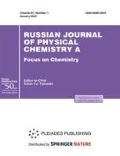Abstract
Metal-organic framework (MOF) is a strong candidate for gas storage and gas separation, which can be modified by various functional groups. In this study, we performed Grand Canonical Monte Carlo (GCMC) and molecular dynamics (MD) simulations to investigate the effect of F, Cl, Br, CHO, NO2, ethyl (Et), methyl (Me), and SH functional groups on the methane and carbon dioxide adsorption and CH4/CO2 separation properties in copper benzene-1,3,5-tricarboxylate (Cu-BTC). Adsorption isotherm of CO2 and CH4 indicate that Cu-BTC has a slight adsorption preference for CO2 over the methane. CH4 adsorption on the NH2, Et, and Me derivatives of Cu-BTC is slightly more than the parent Cu-BTC. Furthermore, our results showed that the MOF selectivity changed with the composition, functional group and pressure. Therefore, we will able choose specific condition for special application. MD results reveal that CO2 molecules more strongly interact with MOF sorption sites than CH4 molecules and also NH2–Cu-BTC system has the highest interaction energy. Furthermore, the mean-square displacement (MSD) results show that the motion of the gas molecules is diffusive and they can move more easily within the pores of Cu-BTC and its derivatives.






Similar content being viewed by others

REFERENCES
S. Cavenati, C. A. Grande, and A. E. Rodrigues, J. Chem. Eng. Data 49, 1095 (2004).
E. L. First, M. M. Hasan, and C. A. Floudas, AIChE J. 60, 1767 (2014).
F. Gholampour and S. Yeganegi, Chem. Eng. Sci. 117, 426 (2014).
X. Zhou, W. Huang, J. Miao, Q. Xia, Z. Zhang, H. Wang, and Z. Li, Chem. Eng. J. 266, 339 (2015).
K. Peikert, F. Hoffmann, and M. Fro, Chem. Commun. 3, 11196 (2012). doi 10. 1039/c2cc36220a
R. B. Getman, Y.-S. Bae, C. E. Wilmer, and R. Q. Snurr, Chem. Rev. 112, 703 (2011).
S. Couck, J. F. M. Denayer, G. V Baron, T. Rémy, J. Gascon, and F. Kapteijn, J. Am. Chem. Soc. 131, 6326 (2009).
M. Zaboli and H. Raissi, Mol. Simul. 43, 675 (2017).
M. Shahabi and H. Raissi, J. Incl. Phenom. Macrocycl. Chem. (n.d.). https://doi.org/10.1007/s10847-016-0664-6
J. J. Gutiérrez-Sevillano, A. Caro-Pérez, D. Dubbeldam, and S. Calero, Phys. Chem. Chem. Phys. 13, 20453 (2011).
M. H. Kowsari and S. Naderlou, Microporous Mesoporous Mater. 240, 39 (2017).
J. Zhang, M. B. Clennell, K. Liu, D. N. Dewhurst, M. Pervukhina, and N. Sherwood, Fuel 177, 53 (2016). https://doi.org/10.1016/j.fuel.2016.02.075
S. S.-Y. Chui, S. M.-F. Lo, J. P. H. Charmant, A. G. Orpen, and I. D. Williams, Science (Washington, DC, U.S.) 283, 1148 (1999).
S. L. Mayo, B. D. Olafson, and W. A. Goddard, J. Phys. Chem. 94, 8897 (1990).
B. Hess, C. Kutzner, D. van der Spoel, and E. Lindahl, J. Chem. Theory Comput. 4, 435 (2008).
S. Nosé, Mol. Phys. 52, 255 (1984).
W. G. Hoover, Phys. Rev. A 31, 1695 (1985).
W. Humphrey, A. Dalke, and K. Schulten, J. Mol. Graph. 14, 33 (1996).
Author information
Authors and Affiliations
Corresponding author
Ethics declarations
The authors declare that they have no conflict of interest.
Supplementary material
Rights and permissions
About this article
Cite this article
Hassan Hashemzadeh, Raissi, H. & Farzad, F. Design of New Materials Based on Functionalization of Cu-BTC for Adsorption and Separation of CH4 and CO2: GCMC and MD Simulations Study. Russ. J. Phys. Chem. 94, 1415–1421 (2020). https://doi.org/10.1134/S0036024420070134
Received:
Revised:
Accepted:
Published:
Issue Date:
DOI: https://doi.org/10.1134/S0036024420070134



